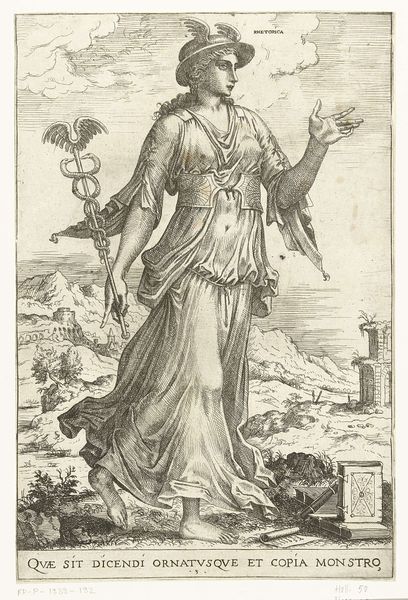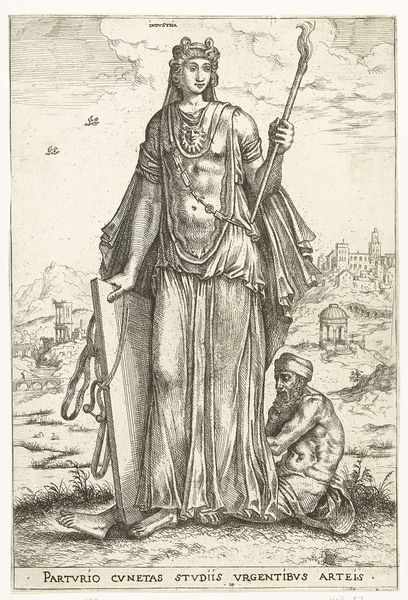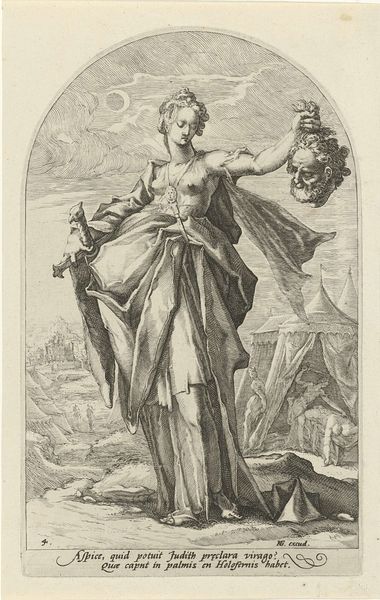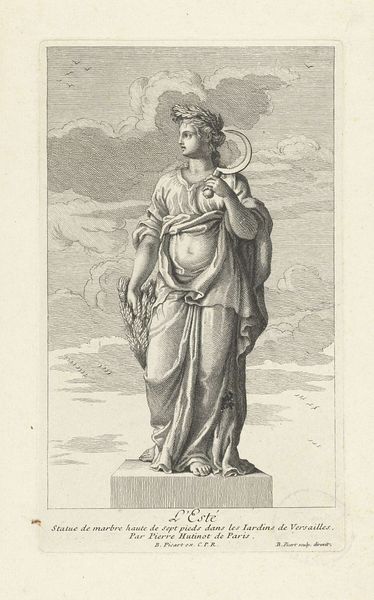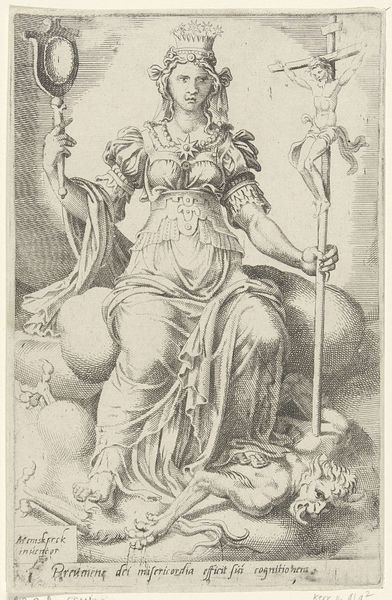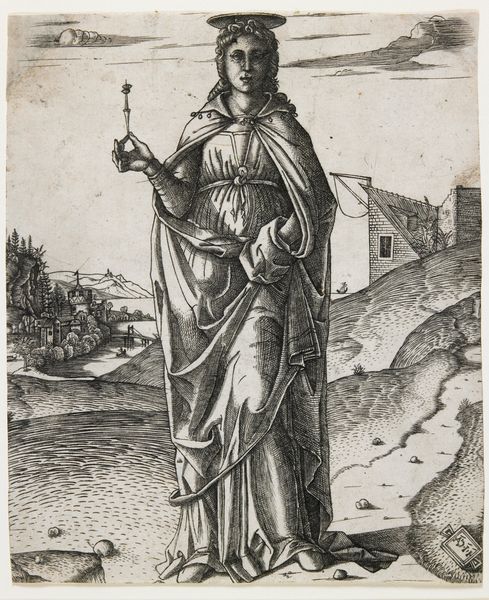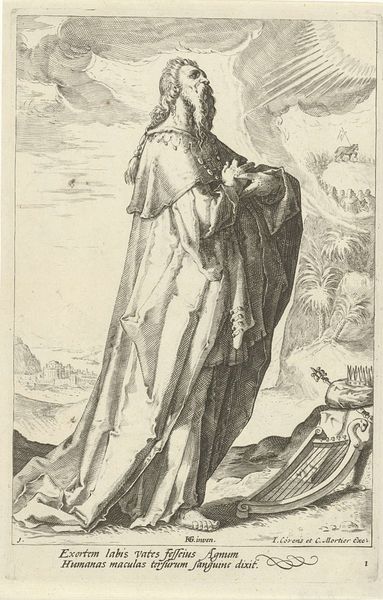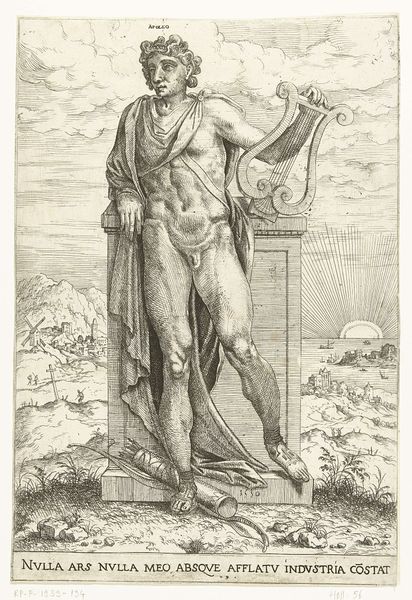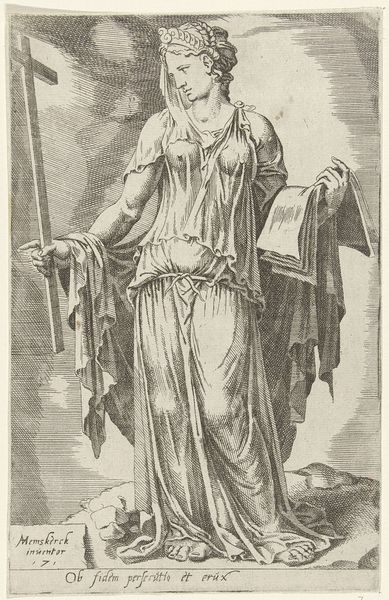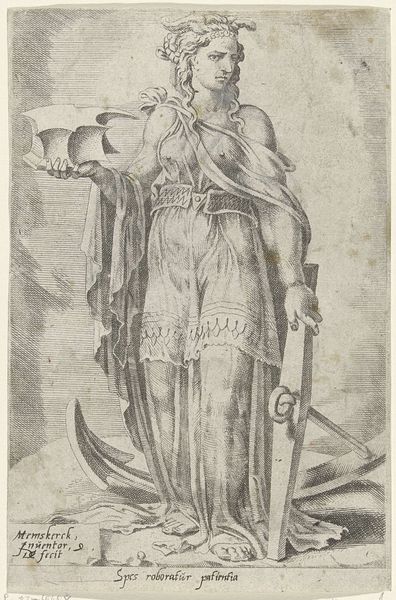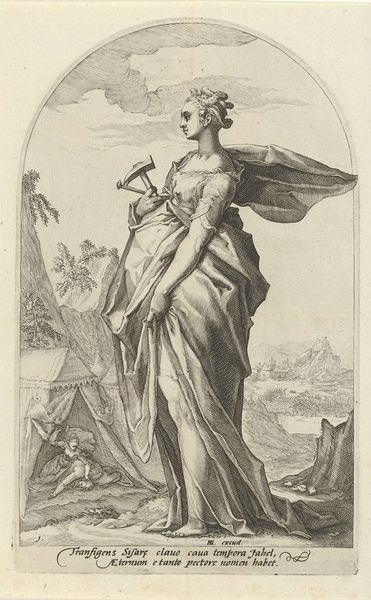
print, engraving
#
portrait
# print
#
pen illustration
#
classical-realism
#
figuration
#
ancient-mediterranean
#
pen work
#
history-painting
#
italian-renaissance
#
engraving
Dimensions: height 298 mm, width 198 mm
Copyright: Rijks Museum: Open Domain
Editor: This is "Minerva," an engraving from 1551 by Hieronymus Cock, currently residing in the Rijksmuseum. I'm struck by how stern and resolute she appears. What symbols or deeper meanings are embedded within this image? Curator: Ah, yes. Cock's Minerva is steeped in potent symbolism. Notice her gaze – unwavering, direct. Consider the helmet. What does that evoke for you? Editor: Power? Authority? Perhaps preparedness for battle? Curator: Precisely! But beyond the literal, the helmet represents intellect, strategic thinking, and wisdom. Look closely at her aegis, her breastplate. Can you discern the Medusa head? Editor: I see it now – the gorgon’s head. Isn't that supposed to inspire fear and protection? Curator: Yes, Minerva adopts the terrifying visage as a shield against ignorance and chaos. Think of Medusa’s petrifying gaze as a metaphor for the illuminating power of knowledge. Her spear isn't just for combat, but also symbolizes righteous strength. Even the text below holds significance; what do you make of it? Editor: The phrase seems to suggest that without her influence, no one cultivates their artistic abilities well. So, Minerva protects artistic creation? Curator: Absolutely. This Minerva is the embodiment of reason, strategic defense, and patronage of the arts and sciences. Her imagery ties back to classical ideals during the Renaissance. Editor: It’s fascinating how many layers of meaning are packed into a single image. Curator: Visual symbols carry a long cultural memory and Cock's image connects us to enduring values, revealing them to successive generations through symbolic language.
Comments
No comments
Be the first to comment and join the conversation on the ultimate creative platform.

